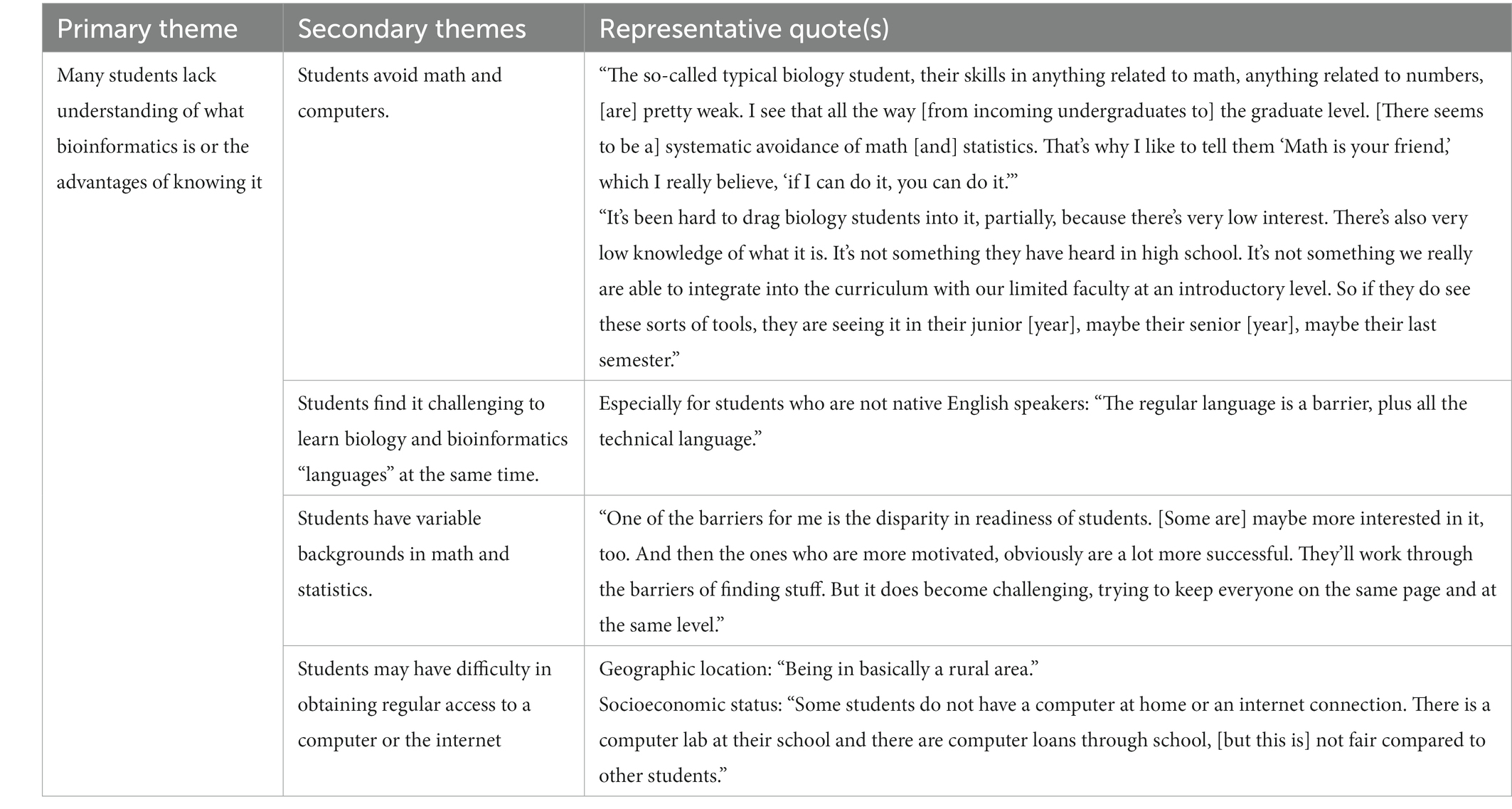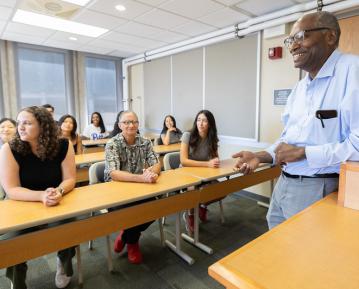Unknown Facts About Bioinformatics Tutor
Unknown Facts About Bioinformatics Tutor
Blog Article
Not known Details About Bioinformatics Tutor
Table of ContentsThe Greatest Guide To Bioinformatics TutorWhat Does Bioinformatics Tutor Mean?Fascination About Bioinformatics TutorBioinformatics Tutor - The FactsAn Unbiased View of Bioinformatics Tutor
Of the overall participants included in the training, 80% were trainees from public greater education establishments, while the remaining 20% came from exclusive establishments. To receive a certification of involvement, pupils were required to go to a minimum of 90% of the overall training hours. As an outcome of this demand, a remarkable 95% of the individuals successfully obtained their certifications, having not just fulfilled the minimum presence standards but likewise completed all appointed activities throughout the training.
During the height of the COVID-19 pandemic, specifically in between June and August 2020, the task team was tasked with organizing specialized training in bioinformatics. This training was particularly intended at pupils from the research study group Nucleus for Study in Applied Computer at the Federal University of Pará (UFRA) The adaptation to remote understanding systems as a result of the pandemic developed an opportunity to explore brand-new teaching approaches and electronic devices that enhanced both reach and performance.
To react to the expanding need in the computing and life sciences areas, an advanced training course was introduced in 2020 entitled Intro to Artificial intelligence. This program was created to offer an available yet comprehensive overview of Artificial Knowledge methods, specifically as applied in bioinformatics. The program was executed over 3 months, from October to December 2020, and was provided entirely online via the Google Meet platform. This digital layout enabled involvement from pupils throughout Brazil, much of whom may not have had the possibility to participate in in-person sessions.
What Does Bioinformatics Tutor Mean?
Roughly 50% of the complete training hours were dedicated to useful activities where trainees developed intelligent designs and applications in a variety of scientific domains, including genetics, molecular biology, and ecological information evaluation. These systems made it possible for pupils to involve in real-time data adjustment, model training, and algorithm experimentation.
The course attracted 80 individuals in overall. Sixty of them were affiliated with various greater education institutions in the state of Pará, while the continuing to be twenty originated from organizations found in five various other Brazilian states. This broad geographical depiction highlighted the nationwide rate of interest in bioinformatics and the expanding need for specialized abilities in this field. By introducing Artificial Intelligence in a sensible and relevant context, the initiative served to link the gap between theory and real-world application, offering students with a solid structure for future research or work in the area.
The training initiative created part of a broader scholastic outreach effort called the Bioinformatics when driving task. This task has, throughout the years, presented dozens of trainees to the globe of bioinformatics and computational biology. The occasions held under this umbrella effort have actually taken location throughout several regions and years, as summed up in Table 1 (Checklist of events, places, years, and complete numbers of pupils and instructors)
Several of these groups, originally brought with each other by their participation in training events, have since gone on to produce independent scientific research in collaboration with local academic institutions. The training not only you can check here fostered scientific reasoning within the context of bioinformatics but also sparked collaborative relationships that extended past the training setting.
The Definitive Guide for Bioinformatics Tutor
The job itself was conceptualized and organized by MB and RR, that managed the planning and implementation of each action. Lectures were supplied by a multidisciplinary group including megabytes, FA, EF, KP, JS, DM, SN, LP, LG, AIR CONDITIONER, rr, and ih. The exact same team, excluding IH and RR, additionally worked as tutors for the practical training components. Funding for the project was offered with the grant 88887.200562/ 2018-00 from CAPES. The authors prolong their gratefulness to everyone who added to the awareness of this job, whether directly or indirectly, since its beginning.
The Federal University of Pará's Workplace of Research study (PROPESP/UFPA) also provided financial assistance, particularly for the production of the last manuscript. The writers state no commercial or monetary conflicts of passion that might have influenced the study. In addition, all interpretations and point of views expressed in this write-up are only those of the authors and do not always show those of their particular institutions, the author, editors, or reviewers involved in the publication process.

The Main Principles Of Bioinformatics Tutor
From an instructional point of view, the training method utilized in the training was intentionally interactive. Classes were conducted in a manner that encouraged trainee engagement and discussion, going beyond rote memorization to discover how ideas are established, used in everyday life, and checked in scholastic setups. The training philosophy concentrated on supporting both solid and having a hard time trainees, giving individualized support, and building self-confidence via sustained mentorship and persistence.

Each team, including roughly 36 participants, was supported by 3 advisors-- many of whom were postdoctoral scientists with specific know-how. These coaches not only helped design the group jobs yet also promoted their implementation, making certain that each study concern was both appropriately tough and pertinent. The objective was to give a naturally sensible context that participants could explore via flexible purposes and accessibility to curated datasets.
For extra insights into the technique and outcomes of this project-based discovering approach, readers are guided to S1 Text, which consists of in-depth summaries of the pedagogical structure, examination approaches, and job motifs used in the training sessions.
Bioinformatics Tutor - Questions
Of the total individuals entailed in the training, 80% were students from public higher education organizations, while the remaining 20% came from personal establishments. To certify for a certificate of participation, trainees were needed to participate in at the very least 90% of the complete training hours. Notably, beyond the trainees that registered in the training sessions, 7 experienced teachers participated in providing the courses, while 3 specialized research study teachers worked with the general training process. Roughly 50% of the overall training hours were dedicated to practical tasks where pupils built smart versions and applications in a range of clinical domain names, including genes, molecular biology, and environmental data evaluation. The training not just fostered clinical reasoning within the context of bioinformatics but likewise triggered collaborative relationships that expanded beyond the training setting.
Report this page